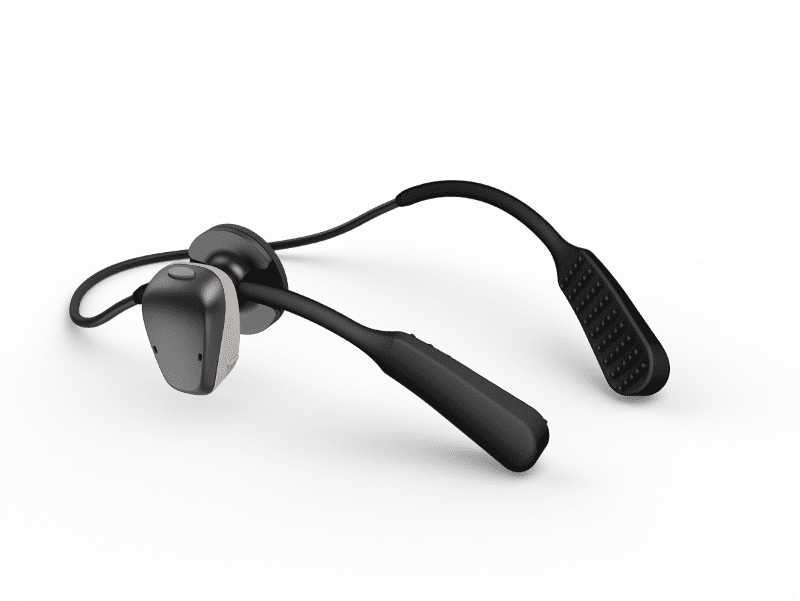Cayman Hearing Center Electronic Implants
BAHA Devices
Hearing aids are the most common device used by audiologists to help individuals with a hearing loss enjoy better hearing and an improved quality of life. However, there are cases when hearing aids do not provide an adequate solution.
While traditional hearing aids process and amplify sounds that pass through the hearing canal, a bone-anchored hearing aid (BAHA) system implants a device that produces sound vibrations to the inner ear using bone conduction.
Our audiologists at Cayman Hearing Center help identify those who might benefit from bone-anchored hearing aids and program the devices to meet the needs of individuals who need a little more help than traditional hearing aids provide.
Bone-Anchored Hearing Aids as an Alternative to Traditional Hearing Aids
A viable alternative for individuals who want to improve their ability to communicate and continue to take part in the lifestyle activities they’re used to but do not get the help they need from traditional hearing aids may be better served by a BAHA system.
Benefits of bone-anchored hearing aids may include:
The capacity to better understand speech
Enjoy conversations during meals or social events
Watch television or listen to music at normal volume levels
Facilitate participation in sports and recreational activities
Bone-Anchored Hearing Aids vs Cochlear Implants
Fact 1
BAHAs, also known as bone-anchored auditory implants, differ slightly from cochlear implants. Although both are surgically implanted devices for hearing loss, they treat different types of hearing problems.
Fact 2
Bone-anchored hearing aids use bone conduction in the skull surrounding the inner ear to bypass the auditory canal and transmit sound stimuli to a functioning inner ear. In contrast, cochlear implants bypass both the auditory canal and inner ear to transmit sound stimuli directly to the auditory nerve.
Fact 3
Like a cochlear implant, there are two parts to a bone-anchored hearing device: a titanium bone implant and an external sound processor. The external microphone and sound processor work just like a hearing aid, picking up sounds from the environment and converting them into vibrations that are transmitted to the embedded implant.
Fact 4
Sound vibrations from the surrounding bone stimulate the hair cells in the inner ear, and these sound signals travel to the brain’s central auditory processing center.
Who is a good candidate for a bone-anchored hearing aid?
A bone-anchored hearing aid works best for people who have at least one inner ear that functions normally. Individuals who benefit from BAHA may have a conductive hearing loss that limits the capacity of the outer or middle ear to transmit sound to the inner ear and leads to complete hearing loss.
Outer or Middle Ear Malformations
Children or adults with severe outer or middle ear malformations are good candidates for a bone conduction implant. Malformations are usually congenital and typically include narrowing of the ear canal or a malformed or absent pinna (external ear) that leads to conductive hearing loss.
Single-Sided Deafness
Those with single-sided deafness (SSD), which involves a complete loss of all hearing in one ear while having normal hearing to profound hearing loss in the other ear, are good candidates for BAHA as well. A major challenge for those with SSD is localizing sound and speech, especially in noisy environments.
SSD is often the result of an acoustic neuroma (a tumor on the hearing nerve), Meniere’s disease, or sudden sensorineural hearing loss. CROS devices, which route sounds from the side with weaker hearing to the side with better hearing, provide an adequate solution for some, but a bone-anchored hearing device may be preferable because it requires the use of only one discreet device.
Chronic Ear Infections or Allergies to Standard Hearing Aids
Individuals with chronic ear infections or allergies to traditional hearing aids are also viable candidates for a bone-anchored hearing device because traditional hearing aids block the ear canal, exacerbating chronic ear infections. Additionally, those with allergies to the materials used to make hearing aids and earmolds may benefit from a bone-anchored hearing device that does not cause an allergic reaction.
FAQs









